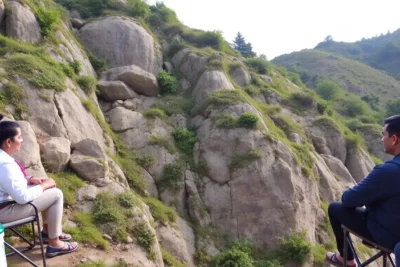
- The Historical Significance of La Sagrada Familia in Barcelona
- Understanding Antoni Gaudí's Vision for La Sagrada Familia
- The Challenges and Delays in Completing La Sagrada Familia
- Architectural Innovations Behind La Sagrada Familia's Design
- La Sagrada Familia: A Symbol of Catalan Identity and Culture
- Exploring the Ongoing Construction of La Sagrada Familia Today
The Sagrada Familia, a magnificent basilica designed by the visionary architect Antoni Gaudí, stands as a testament to the intertwining of faith, art, and nature. Its intricate details and towering spires have captivated millions, but the ongoing construction raises questions about the complexities behind this monumental project.
In exploring The Enigma of La Sagrada Familia: Unraveling Barcelona's Most Iconic Masterpiece's Delays, we delve into the historical, cultural, and technical challenges that have prolonged its completion. As we unravel the layers of this architectural marvel, we begin to understand the profound significance it holds for Barcelona and beyond.
The Historical Significance of La Sagrada Familia in Barcelona
The Sagrada Familia is not only a remarkable architectural feat but also an enduring symbol of Barcelona's identity. Since its inception in 1882, it has become a focal point for both locals and tourists, embodying the city's rich cultural heritage. The basilica's unique design elements reflect the Modernisme movement, showcasing the innovative spirit of Catalonia during the late 19th and early 20th centuries.
Historically, La Sagrada Familia represents a fusion of religious devotion and artistic expression. The project was initiated under the guidance of the Associació Espiritual de Devots de Sant Josep, aiming to create a temple that would honor the Holy Family. This dedication has transformed the site into a pilgrimage destination, reinforcing its significance as a spiritual landmark in the heart of Barcelona.
Moreover, the basilica's construction has mirrored the socio-political landscape of Spain. It has witnessed events such as the Civil War, which halted progress at various stages. Today, La Sagrada Familia serves as a reminder of resilience, with ongoing work symbolizing hope and perseverance against the odds. The project has become a testament to the collaborative efforts of architects, artisans, and the community.
Finally, the growing global recognition of La Sagrada Familia is evident in numerous accolades, including its designation as a UNESCO World Heritage Site in 2005. This recognition highlights its architectural and cultural significance, ensuring that it remains a vital part of not only Barcelona's history but also its future. As the basilica nears completion, it continues to inspire generations, illustrating the power of human creativity and faith.
Understanding Antoni Gaudí's Vision for La Sagrada Familia
Antoni Gaudí's vision for La Sagrada Familia transcends mere architectural design; it embodies a holistic approach that intertwines spirituality, nature, and artistic innovation. Gaudí sought to create a space that reflected the glory of God through its grandeur and intricate details. His unique style, characterized by organic forms and vibrant colors, aimed to evoke a deep emotional response from visitors, inviting them into a meditative experience.
Central to Gaudí's design philosophy was the concept of natural inspiration. He believed that architecture should mimic the forms and structures found in nature. This is evident in the basilica's columns, which resemble tree trunks, branching out to support the ceiling like a forest canopy. By using geometric shapes and complex patterns, Gaudí aimed to create a harmonious environment that resonates with the natural world, enhancing the spiritual essence of the space.
Moreover, Gaudí incorporated various religious symbols into the structure, making La Sagrada Familia a narrative of the Christian faith. Key elements include:
- The Nativity Facade: Celebrating the birth of Christ with intricate sculptures that tell the story of the Gospel.
- The Passion Facade: Portraying the suffering and death of Jesus through stark and dramatic designs.
- The Glory Facade: Representing His resurrection and ascension, intended to inspire hope and devotion.
In Gaudí's vision, La Sagrada Familia is not just a building but a living testament to faith and creativity. He famously stated, "My client is not in a hurry," reflecting his belief that true artistry requires time and dedication. As construction continues, the basilica evolves, revealing layers of Gaudí's intentions and further deepening its connection to Barcelona's cultural and spiritual landscape.
The Challenges and Delays in Completing La Sagrada Familia
Completing La Sagrada Familia has faced numerous challenges that have contributed to its prolonged construction timeline. Among these issues are financial constraints, which have limited the resources available for the project. Additionally, the intricate design demands a high level of craftsmanship, requiring skilled artisans whose availability fluctuates. The ongoing need for modern engineering solutions also presents hurdles as the original plans must adapt to contemporary standards.
Moreover, La Sagrada Familia has encountered significant delays due to external factors, including:
- Political unrest: Events such as the Spanish Civil War halted progress on the construction.
- Natural disasters: Damage caused by storms and other environmental factors has necessitated repairs that further delay work.
- Public interest: The influx of tourists and pilgrims sometimes disrupts construction activities, creating logistical challenges.
Another critical factor in the delays is the ambitious scope of Gaudí’s vision, which incorporates complex geometrical designs and symbolic elements. Each component of the basilica demands meticulous attention to detail, often requiring re-evaluation of techniques and materials. This commitment to upholding Gaudí's original intentions means that shortcuts are not an option, thereby extending the timeline for completion.
In recent years, advancements in technology have provided new methods for overcoming some of these challenges. The use of 3D modeling and computer-aided design has allowed for more precise planning and execution, ensuring that the intricate details of La Sagrada Familia are faithfully realized. As a result, while the project continues to face obstacles, there is hope that these innovations will facilitate a more efficient path to completion.
Architectural Innovations Behind La Sagrada Familia's Design
The architectural innovations embedded within La Sagrada Familia's design represent a groundbreaking approach to religious architecture. One of the most notable features is the use of hyperboloid structures, which allow for greater stability and aesthetic appeal. Gaudí implemented these complex geometrical shapes to create a unique visual experience, merging form with function in a way that challenges traditional architectural norms.
In addition, Gaudí's pioneering use of catenary arches is evident throughout the basilica. These curves not only provide structural integrity but also emulate the natural forms found in the environment, reinforcing his belief that architecture should echo nature. This innovative technique generates an organic flow within the space, enhancing its spiritual ambiance and inviting visitors to connect with the divine.
Furthermore, the incorporation of light manipulation is a key feature of La Sagrada Familia. Gaudí designed the basilica's stained glass windows to filter sunlight in various colors, transforming the interior into a vibrant tapestry of light. This intentional interplay between light and shadow not only beautifies the space but also creates a dynamic atmosphere that evolves throughout the day, reflecting the passage of time and the divine presence.
Lastly, advancements in modern technology have allowed for the continuation of Gaudí's vision despite the challenges faced during construction. Techniques such as 3D printing and digital modeling aid in replicating Gaudí's intricate designs, ensuring that every detail aligns with his original intent. This fusion of traditional craftsmanship and contemporary innovation exemplifies the ongoing journey of La Sagrada Familia, showcasing how architectural innovation can bridge the past with the present.
La Sagrada Familia: A Symbol of Catalan Identity and Culture
La Sagrada Familia is more than just an architectural marvel; it serves as a cultural emblem of Catalonia. Its design embodies the unique spirit of Catalan identity, which celebrates both regional pride and international recognition. The basilica's intricate beauty and innovative style resonate deeply with the people of Barcelona, making it a symbol of their cultural heritage and aspirations for the future.
The construction of La Sagrada Familia has become a unifying force for the Catalan community. Throughout its history, it has been a focal point for local celebrations and events, symbolizing resilience and hope during challenging times. The ongoing work on the basilica reflects the determination of Catalonia to preserve its identity, showcasing the region's commitment to art and spirituality.
Moreover, La Sagrada Familia embodies key aspects of Catalan Modernisme, a movement that sought to break away from traditional architectural styles. This ambition is evident in the basilica's organic shapes and vibrant colors, which draw inspiration from the natural landscape. As such, it stands as a testament to the region's innovative spirit and artistic expression.
In addition to its architectural significance, La Sagrada Familia plays a vital role in fostering a sense of belonging among Catalans. It serves as a pilgrimage site and a gathering place for locals and visitors alike. The ongoing dedication to completing Gaudí's vision reinforces the shared cultural narrative, making La Sagrada Familia a true representation of Catalan pride and identity.
Exploring the Ongoing Construction of La Sagrada Familia Today
The ongoing construction of La Sagrada Familia today is a remarkable convergence of tradition and modernity. As artisans and architects strive to honor Gaudí's original vision, they also embrace contemporary techniques to enhance the basilica's intricate design. The project, which began over a century ago, is now approaching its long-awaited completion, with an expected finish date set for 2026, aligning with the centenary of Gaudí's death. This ambitious timeline reflects a profound commitment to preserving the artistic legacy of this architectural masterpiece.
Among the notable advancements in the construction process are the use of advanced technologies that streamline the building techniques. Innovations such as 3D printing and computer modeling enable precise replication of Gaudí's complex geometrical forms. These tools allow for greater accuracy and efficiency, ensuring that the intricate details of the basilica are realized as intended. Furthermore, the integration of modern materials aids in achieving the structural integrity required for such a monumental edifice.
Additionally, the construction site itself is a hub of cultural activity, attracting millions of visitors each year. This influx has led to a unique challenge: balancing tourist engagement with ongoing construction. The project has implemented measures to mitigate disruptions, allowing visitors to experience the basilica's evolving state while supporting the artisans at work. Key strategies include:
- Guided tours: Educating visitors about the construction process and Gaudí's vision.
- Visitor center: Providing insights into the history and significance of La Sagrada Familia.
- Workshops: Involving the community in the artistic and construction efforts.
As La Sagrada Familia approaches its completion, it stands not only as a symbol of architectural brilliance but also as a testament to the enduring spirit of collaboration and dedication. The ongoing construction continues to inspire awe and reflection, drawing individuals into a shared journey of faith, art, and cultural pride that transcends generations.
 Indulge in Delicious Churros near Sagrada Familia in Barcelona
Indulge in Delicious Churros near Sagrada Familia in Barcelona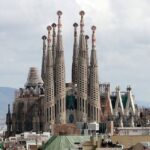 The Enigmatic Charm of Sagrada Familia: A Central Gem in Barcelona
The Enigmatic Charm of Sagrada Familia: A Central Gem in Barcelona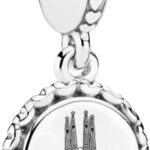 Sagrada Familia: The Epicenter of Barcelona's Charm
Sagrada Familia: The Epicenter of Barcelona's CharmIf you want to know other articles similar to The Enigma of La Sagrada Familia: Unraveling Barcelona's Most Iconic Masterpiece's Delays you can visit the category Blog.
Deja una respuesta

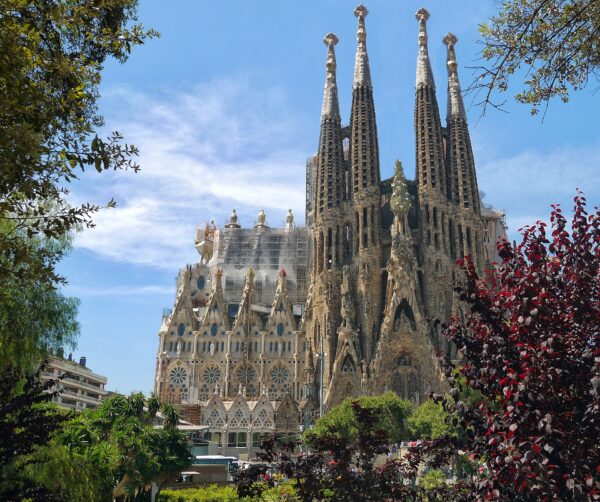
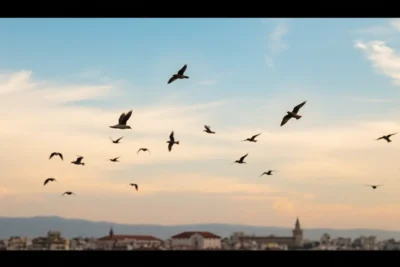



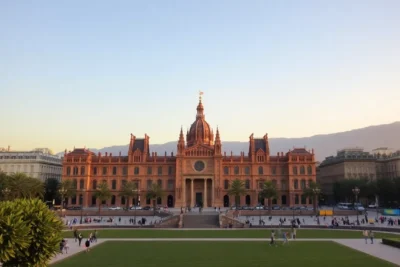

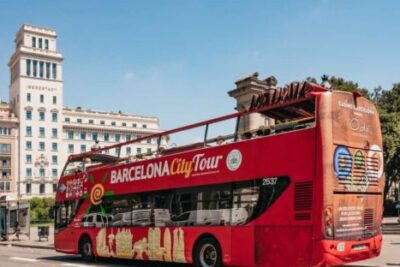
Read more!